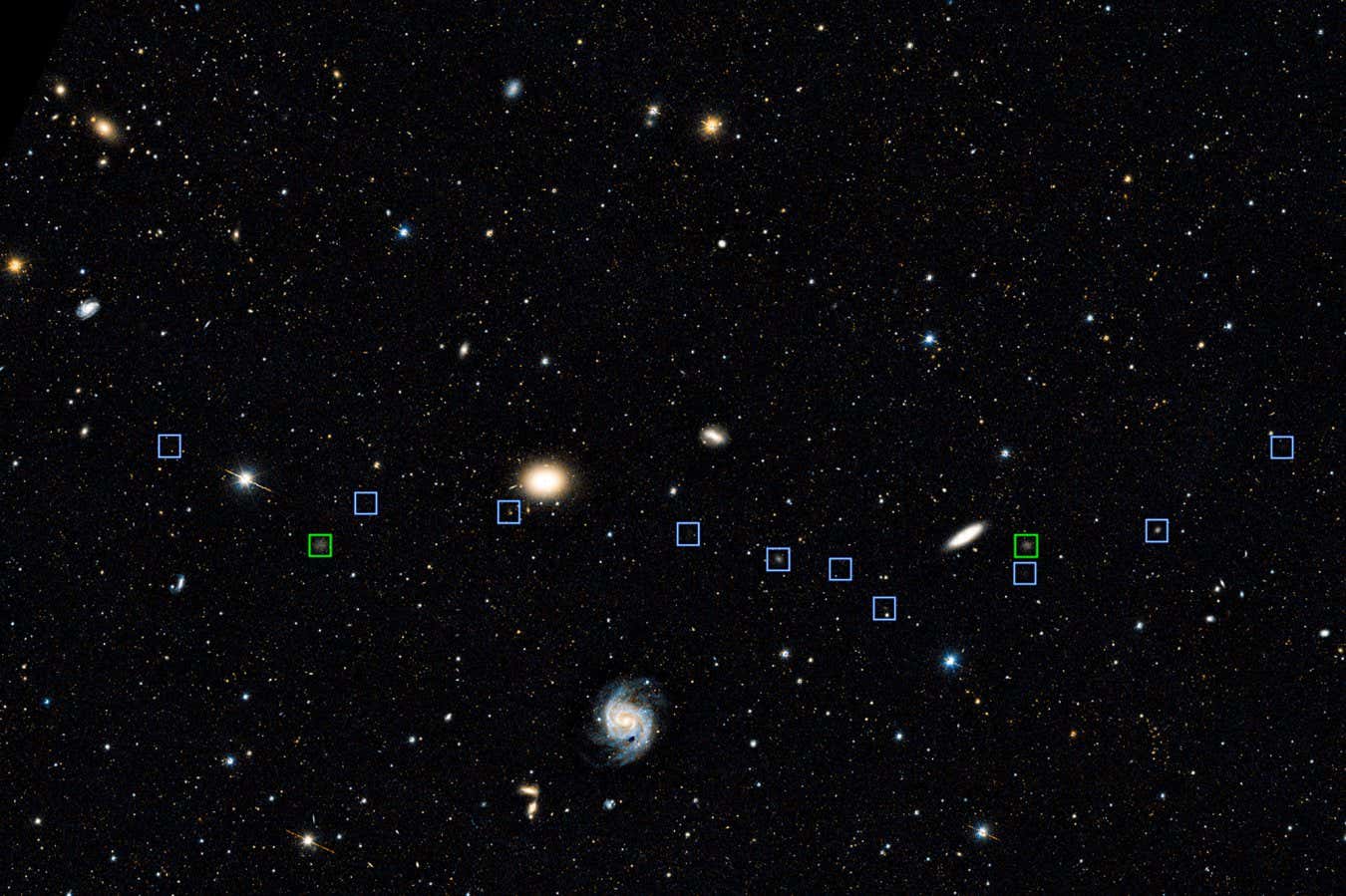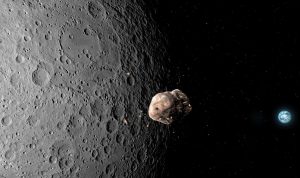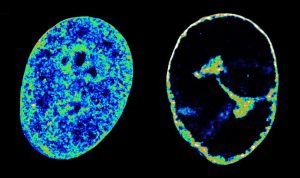A high-speed crash between two dwarf galaxies might explain a unique feature in space – and provide useful information on dark matter
A line of galaxies formed after two dwarf galaxies collided head-on, ripping gas from each otherKeim et al./DECaLS
A line of galaxies formed after two dwarf galaxies collided head-on, ripping gas from each other
A strange line of dwarf galaxies may have been the result of a bullet-like cosmic collision.
Michael Keimat Yale University and his colleagues used the Keck Observatory in Hawaii to study a unique trail of 12 small and faint dwarf galaxies about 75 million light years from the Milky Way.
Read moreMerging black holes may create bubbles that could swallow the universe
Merging black holes may create bubbles that could swallow the universe
The orientation and speed of the galaxies suggest they originated from a head-on collision between two galaxies in a group called NGC 1052. The collision left gas in its wake, which eventually clumped into groups of stars under gravity.
“They’re very unique,” says Keim. “It’s the only system like this that’s known.”
There is a similar collection of larger galaxies called theBullet Cluster, so Keim and his colleagues have nicknamed this system the “bullet dwarf”.
Voyage across the galaxy and beyond with our space newsletter every month.
The two galaxies are thought to have crashed into each other at 350 kilometres per second relative to each other about 9 billion years ago. As they passed through one another, gas was ripped from each galaxy. “It’s unlikely that two stars will collide,” says Keim. “But that’s not true for clouds of gas.”
Curiously, each of the clumps of stars left behind from the collision is devoid of dark matter. This is very unusual as most galaxies have a large amount ofdark matter, sometimes accounting for more than 90 per cent of their total mass.
Read moreAstronomers have spotted the largest known object in the universe
Astronomers have spotted the largest known object in the universe
Keim and his team think this might be because while the gas was torn from the galaxies, dark matter does not interact with matter – or even itself – so it was unaffected.
That could refute alternative ideas for dark matter that suggest our evidence for its gravitational influence result from a mismeasurement of how stars and galaxies behave. “This is saying dark matter is a particle, and it can become separated from a galaxy,” says Keim.
Reference:arXivDOI: 10.48550/arXiv.2506.10220
arXivDOI: 10.48550/arXiv.2506.10220
The world capital of astronomy: ChileExperience the astronomical highlights of Chile. Visit some of the world’s most technologically advanced observatories and stargaze beneath some of the clearest skies on earth.Find out more
Experience the astronomical highlights of Chile. Visit some of the world’s most technologically advanced observatories and stargaze beneath some of the clearest skies on earth.
Receive a weekly dose of discovery in your inbox!
We'll also keep you up to date withNew Scientistevents and special offers.
















